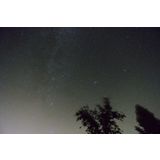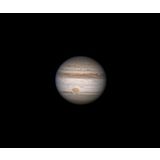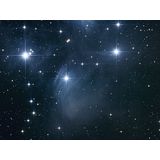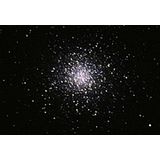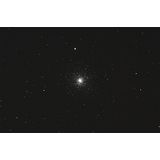
Here are a few of Orion's top picks for October stargazing:
October Meteors-The annual Draconid meteor shower peaks on the night of October 7th. While the Draconid isn't usually the strongest of meteor showers, it is known to have spectacular outbursts. Look towards the constellation Draco for your best chance to catch a glimpse of a Draconid meteor.
On the night of October 21st, you can feast your eyes on the Orionid meteor shower. Look towards the eastern sky, where the constellation Orion will rise after 10PM, for your best chance to see an Orionid meteor. As many as 50-70 meteors per hour will appear to radiate out of our namesake constellation as it peaks on the evening of October 21st.
The Milky Way-The brightest portion of our home galaxy will be visible in the constellation Cygnus. Are the skies where you are located dark enough to see it? With a star chart, trace the Milky Way from Cygnus to Cassiopeia. The cloudy galaxy keeps stretching all the way through Perseus towards Auriga, which is visible late in the evening.
Scan the Milky Way with Binoculars-You can see a lot in the Milky Way using just binoculars. Even if your skies are so light polluted that you cannot see the Milky Way with unaided eyes, use a star chart to determine its path in the sky. Using 50mm or larger binoculars, scan the path of the Milky Way for pleasing views of brighter star clusters and other interesting sights.
Big Jupiter-Rising about 10PM from the eastern horizon, big Jupiter will make its debut in October for the 2012/2013 observing season. Opposition occurs on December 3rd, but October will still provide great viewing opportunities of the gigantic planet and its brightest moons. While Jupiter is one of the brightest objects in the sky, easily seen even from the city with unaided eyes, Jupiter requires a telescope for good views. Almost any telescope will let you see the four brightest Jovian moons (Io, Europa, Ganymede and Callisto). Depending on the size of your telescope and the clarity and steadiness of the air, you may be able to observe Jupiter's striped equatorial cloud belts and perhaps even catch a glimpse of the Great Red Spot - an enormous persistent storm on the south border of the southern belt.
Fabulous Fall Star Clusters-Just west of Jupiter is the famous "open" star cluster Pleiades, also called M45 or Subaru. The Pleiades cluster is an excellent target for binoculars, since telescopes are usually too powerful to provide a view of the entire cluster in one field-of-view. About a hand's width southeast of the Pleiades, covering about 5 degrees of the sky is an association of brighter stars called the Hyades, with stars laid out in the shape of a "V", pointing west and slightly south. The Hyades is another great binocular object. Late in October evenings, low in the northeast sky, pick out the constellation Auriga; then using a star chart, see if you can pick out the three star clusters Auriga hosts - M36, M37 and M38 - all in a row and visible with binoculars or a telescope from a dark sky site.
Dazzling Globular Star Clusters-In northwest October skies, you can still catch a glimpse of M13, the Great Cluster in Hercules, which is one of the most famous globular star clusters. This giant ball of densely packed stars is very distinctive in any telescope, and is a spectacular sight in an 8-inch or larger aperture telescope.
In the eastern sky, off to the southwest of the Square of Pegasus is the grand globular cluster M15. This magnificent, densely packed ball of stars can be found with binoculars, but you'll need a telescope of at least 6" aperture to resolve individual stars within the cluster.
A Grand Galaxy-Located in the tiny constellation of Triangulum and just opposite the star Beta Andromeda is another splendid galaxy, M33. From a dark sky site, this galaxy is visible in 50mm binoculars, but a telescope at low power will provide the best views. M33 has very low surface brightness, so look when the Moon is down and from the darkest sky site you can find!
A Challenging Glowing Nebula-Making a small equilateral triangle with the stars Eta and Alpha Cassiopeia is the elusive Pac Man nebula - NGC 281. The Pac Man is a famous target for astrophotographers, but it is not easy to observe visually. From dark sky locations, you can pick out its faint glow with large binoculars, but a telescope at low power with the help of an Oxygen-III filter will show it best.





